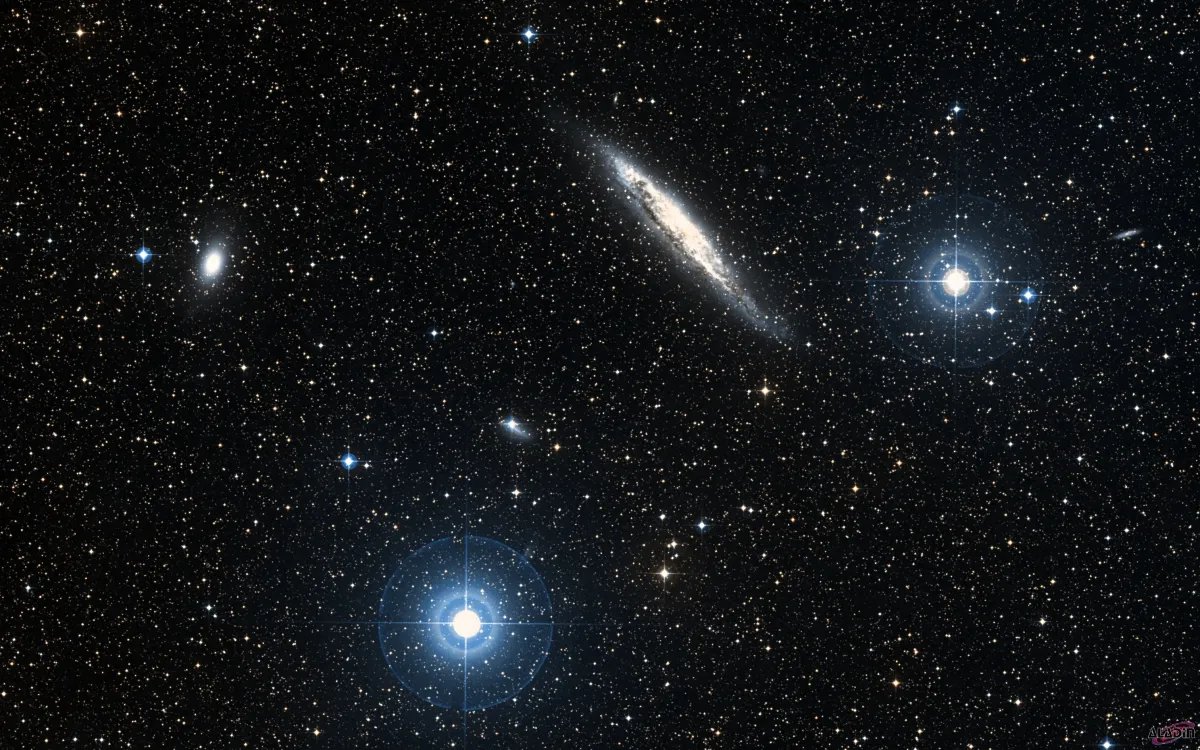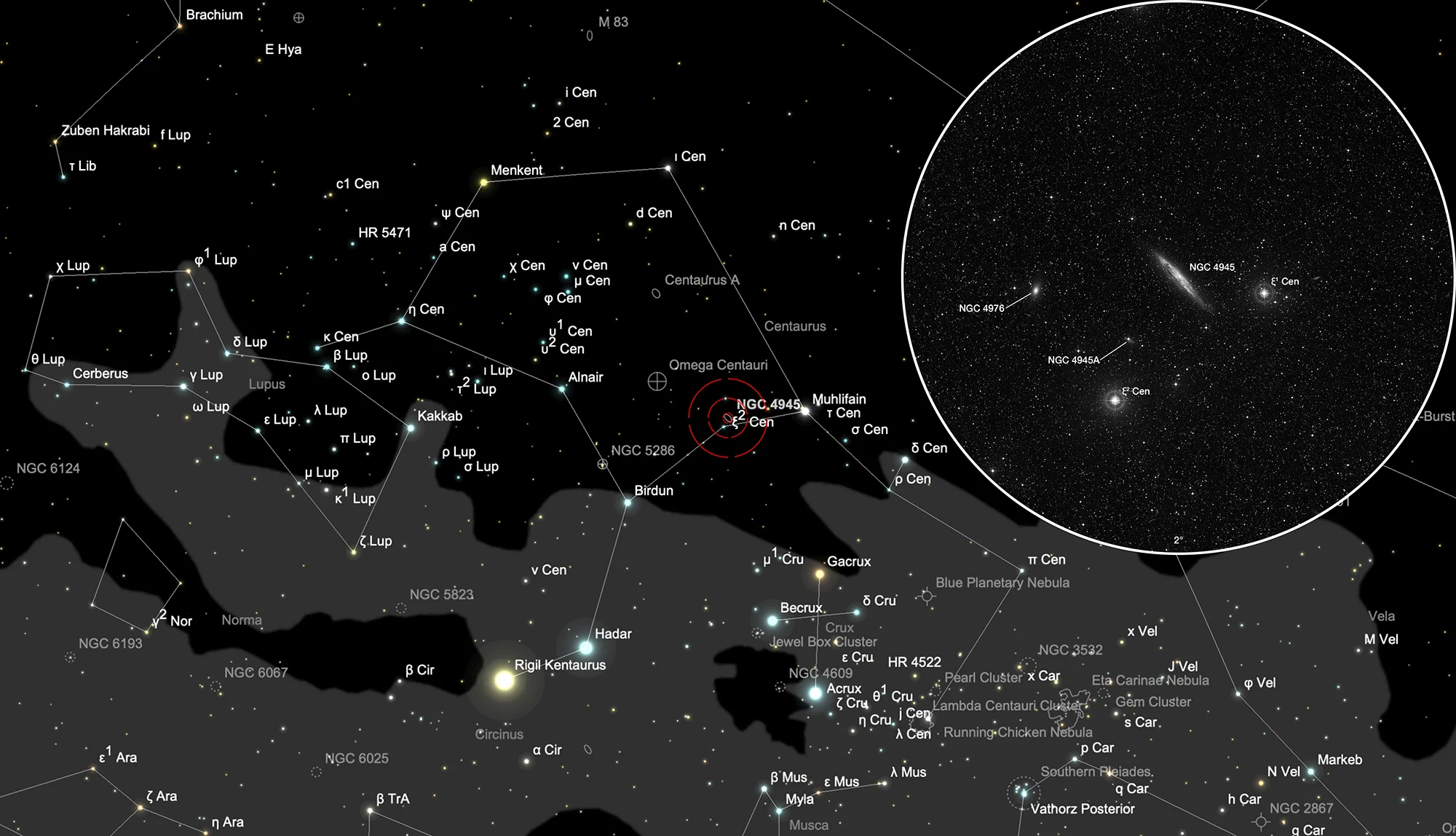Galaxy NGC 4945

History
Scottish astronomer James Dunlop discovered NGC 4945 on 29 April 1826 while observing with his 9-inch f/12 speculum reflector from Parramatta, NSW. He listed it as Δ 411, observed it six times and finally wrote: «A beautiful long nebula, about 10' long, and 2' broad, forming an angle with the meridian, about 30° south preceding and north following; the brightest and broadest part is rather nearer the south preceding extremity than the centre, and it gradually diminishes in breadth and brightness towards the extremeties, but the breadth is much better defined than the length. A small star near the north, and a smaller star near the south extremity, but neither of them is involved in the nebula. I have strong suspicions that the nebula is resolvable into stars [on 4 June], with very slight compression towards the centre. I have no doubt but it is resolvable. I can see the stars, they are merely points. This is north following the first ξ Centauri.» [50]
John Herschel observed the galaxy on 31 March 1835 using his 18.3 inch reflector from South Africa. He recorded it as h 3459 and wrote: «Bright; very large; very much elongated; very gradually little brighter in the middle. Length much more than a diameter of the field, or than 15'. Its light extends to a star 14th mag beyond the parallel of Brisbane 4299. Position of elongation 38.7°.» In the same night he also discovered NGC 4976 (h 3468) and noted: «Bright; round; gradually much brighter in the middle middle; 80".» [11]
Physical Properties
| Name | RA | Dec | Type | bMag | vMag | B-V | SB | Dim | PA | z | D(z) | MD | Dreyer Description | Identification, Remarks |
|---|---|---|---|---|---|---|---|---|---|---|---|---|---|---|
| NGC 4945 | 13 05 26.1 | -49 27 46 | Gx (SBc) | 9.3 | 8.4 | 0.9 | 12.9 | 19.8 × 4 | 43 | 0.001878 | 7.93 | 3.980 | B, vL, vmE 38°.7 | h 3459; GC 3386; ESO 219-24; AM 1302-484; IRAS 13025-4911 |
| NGC 4945 A | 13 06 33.7 | -49 41 30 | Gx (SBm) | 13.0 | 12.4 | 0.6 | 13.8 | 2.5 × 1.6 | 55 | 0.004565 | 19.28 | B, vL, vmE 38°.7 | h 3459; GC 3386; ESO 219-28 | |
| NGC 4976 | 13 08 37.4 | -49 30 21 | Gx (E4) | 11.0 | 10.0 | 1.0 | 13.1 | 5.6 × 3 | 161 | 0.004847 | 20.47 | 12.520 | B, pL, R, gmbM | h 3468; GC 3413; ESO 219-29 |
Finder Chart
The galaxy pair NGC 4945 and NGC 4976 is located in the constellation Centaurus. They are not visible from Europe. On 8 April it in opposition with the Sun and is therefore highest in the sky at around midnight.
